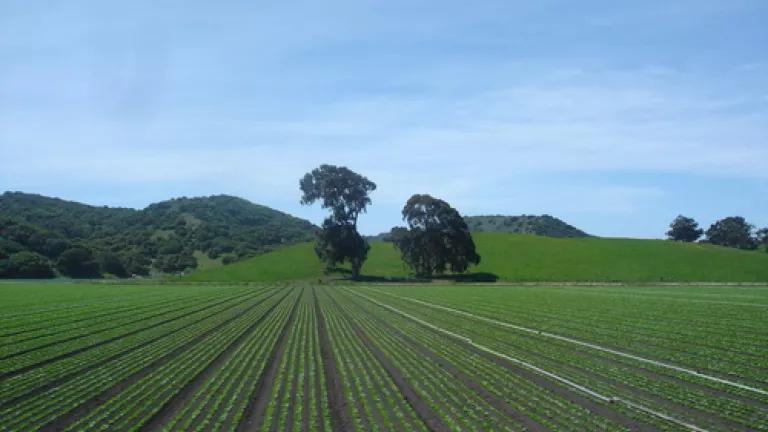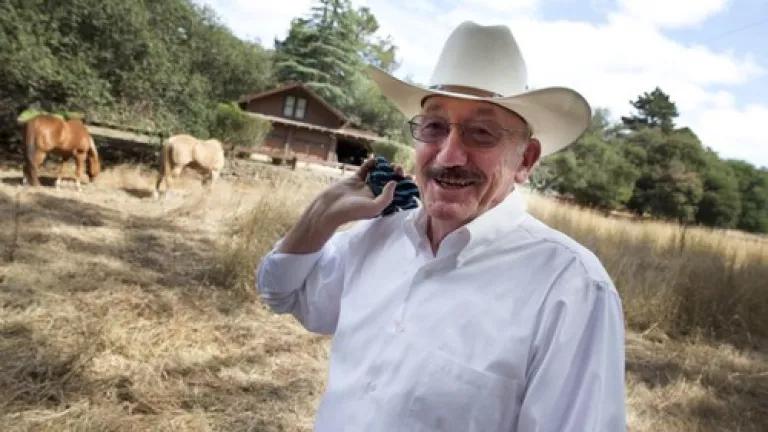
In a disappointing 3-2 vote, on Tuesday, March 17, the Board of Supervisors in Monterey County, California found that there was insufficient evidence of urgency to warrant a countywide moratorium on fracking. At a public hearing before the vote, at least two of the supervisors stated that they were hesitant to act now because they wanted to wait for the California Department of Oil, Gas, and Geothermal Resources (DOGGR) to finalize its statewide environmental impact review (or EIR) and to implement its well stimulation regulations later this summer. The County is waiting for protections that aren't coming.
The Salinas Valley. Photo credit: Wikipedia.
I drove down to Monterey last week to meet with our local coalition partners, Protect Salinas Valley and Protect Monterey County. Home to over a million acres of farmland, right now the fields of Monterey are bursting, almost neon green with spring crops. Most of the salad greens you and I eat are grown in this region, and the locals love to remind you that it's "America's Salad Bowl." The Salinas Valley grows strawberries, tomatoes, broccoli, celery, and wine grapes too. There is a lot at stake.

Protect Salinas Valley founder Ed Mitchell. Photo credit: Sarah Craig
We wrote to the Board of Supervisors before their vote to remind them that they have an independent duty to protect Monterey. We warned the Board that the County cannot rely on the state's environmental review process or well stimulation regulations to protect local agricultural lands, rivers, wildlife, or residents. We know, because we reviewed DOGGR's draft EIR and submitted lengthy technical comments outlining its myriad shortcomings and problems. You can read my blog about the statewide EIR here.
The draft EIR is a toothpick when we need a shovel. It won't get the job done. It is entirely inadequate for protecting Monterey County or any other locality in California. The draft EIR is vague and inexplicit about safeguard requirements, and it defers important precautions and protections to some undisclosed later date. In many places, DOGGR is clear that if cities and counties want to protect their residents, farm land, and ecosystems they are on their own. For example, in section 10.3, DOGGR states that to avoid air odors and toxic air emissions from fracking--that could affect substantial numbers of people--will require counties and cities putting set-backs and restrictions in place with their own police power and statutory authority.
We already know that fracking and other risky well stimulation methods risk significant adverse effects to the environment and human health. Monterey should not sit back and wait for oversight and protections that aren't coming. Instead, we need cities and counties to lead the way.
Thanks to Sarah Taylor for contributing to this post.

